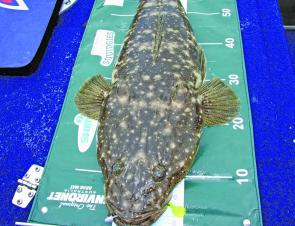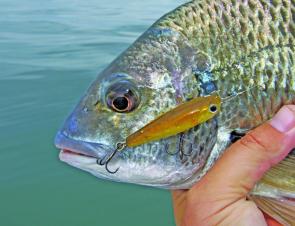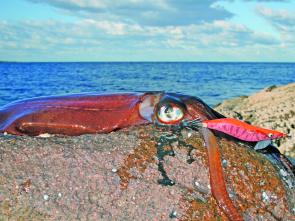October marks the start of some fantastic estuary fishing in Port Stephens. The days become longer and warmer and water temperatures start to rise, trigging a change in the feeding habits of many estuary species.
Dusky Flathead will be gathering in many locations in anticipation of spawning. Likely locations will be the many mangrove-lined sand and weed flats, drop-offs and any other structure that sees good tidal flow.
The Karuah River, Tilligerry Creek, Taylors Beach and Pindimar are all happy hunting grounds for flathead at this time of year.
I like to fish the rising tide on the flats with shallow-diving hardbodies or soft plastics rigged on 4g to 7g jig heads, but when the tide begins to fall I concentrate on drop-offs with soft plastics on heavier jig heads of 7g to 10g.
Of course, pilchards and whitebait will also be effective, rigged on appropriately sized ganged hooks and slowly retrieved just above the bottom.
Bream have spread further upstream, concentrating around the rocks and oyster racks of the Karuah River and Tilligerry Creek.
As the water warms above 20°, bream will be looking upward, hunting prawns that skip across the surface. This is the start of some terrific surface lure action and small natural-coloured poppers and walk-the-dog style lures are the best bet.
Those who prefer soaking baits will find cubed pilchards and whitebait pinned lightly on 1/0 baitkeeper-style hooks will be best allowed to drift back naturally towards the oyster racks. Be sure to use fluorocarbon leaders of least 8lb, which provides at least a little security against those unforgiving oysters.
Jewfish numbers have been outstanding in the bay and although most fish are sub-10kg, the odd bigger specimen has been caught.
Live-baiting on the tide changes is most productive, especially with baits such as legal size tailor (30cm), slimy mackerel and trumpeter whiting are best. Locations such as Middle Island, Karuah bridges and the wreck in Salamander Bay have been standouts.
As daylight saving approaches, I find that beach fishing becomes a great option. I like nothing better than driving down Stockton Beach and locating a likely looking fish gutter an hour before sunset with the expectations of landing a quality jewfish.
There are many factors to take into consideration before a beach jewfish expedition. Try to time it with a rising tide just on dark, a light north-east sea breeze and a few days after the full moon.
Fresh bait is essential and you can’t go past fresh squid, in fact I’d have to say it’s the key. Cut it neatly into strips and pin it with two 5/0 suicide hooks connected to 30lb or 40lb fluorocarbon leader and you’re off and racing.
Outside fishing can be a little hit-and-miss, mainly to do with fluctuating current. The best bet remains to fish shallow for snapper, especially by anchoring and using floating baits.
Local fishing personality and sometime NSWFM contributor Stinker has told me how he fishes for big reds.
His choice of bait is a large, intact green prawn pinned on a single 5/0 allowed to drift down a berley trail. He believes that all the peckers such as yellowtail and sweep can attack the bait without destroying it before it floats down into the snapper strike zone.
He also concentrates his efforts in depths around 20m over a bottom structure of white boulders.
It’s also been great to see the influx of some terrific sand flathead in around 40m to 50m north of Broughton Island and south from Little Island.
A simple paternoster rig dropped straight to the bottom with half pilchards attached will do the job but you can add a flasher rig to attract larger fish.
Trolling smaller skirted lures or divers around the washes will have rods bending on the yellowtail kingfish, tailor and salmon that have been prolific around the front of Fingal, Big and Little islands.
Along the continental shelf, those trolling skirted or bibbed minnows have encountered striped tuna and the odd yellowfin. Birds and temperature breaks have been the key, but towards the end of the month as warmer water pushes down, mahi mahi and the odd striped marlin will be found.
And if you’re down towards the Car Park area, keep your eye out for the gas rig which should be test drilling about 30km east south-east of Boat Harbour; by my calculations that puts it just inside a very productive marlin ground.
Reads: 6895
Male and larger female flathead, such as this one, will start to gather for spawning this month.

As the water warms in the estuary, bream will be eager to attack surface lures around the oyster racks and flats.

Fresh squid is the author’s preferred bait for beach jewfish, but it’s also the author’s preferred seafood!




